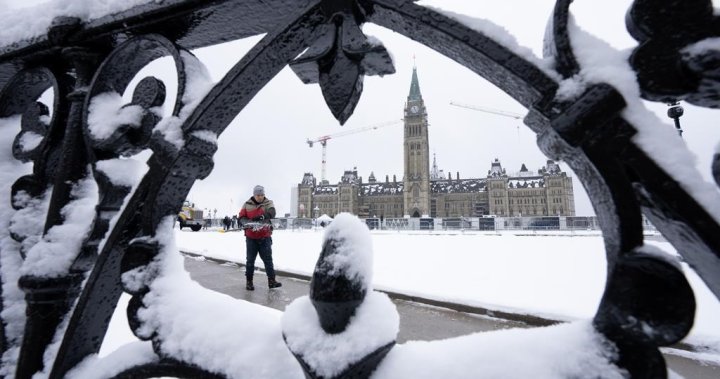Organized crime groups are attempting to “infiltrate” government agencies and departments, a report obtained by Global News suggests.
The Criminal Intelligence Service Canada (CISC) reported in 2022 that 29 organized crime groups reportedly have “influence and access” within the public sector, while at least 369 groups are believed to be trying to gain a toehold in government.
The CISC report notes that Canada ranks low for public sector corruption, but also notes the risk: criminal “infiltration” can boost the cost of government projects by up to 50 per cent, while also damaging public confidence in institutions.
The “infiltration” is primarily taking place within local and “regional” governments, the CISC suggests, and groups “may be using the benefits of this access for interprovincial or international criminal activities.”
The report is a rare look at the scope of organized crime groups operating in Canada — believed to be more than 3,000 in 2022, according to the CISC. It also provides hard numbers on the “infiltration” phenomenon, well-documented in the United States but less so in Canada.
Last month, the National Security and Intelligence Committee of Parliamentarians (NSICOP) noted that criminal and extremist groups have attempted to join Canadian law enforcement and security agencies, and suggested some have been successful.
The RCMP consider 14 organized crime groups operating in Canada to be a serious threat, the NSICOP report read, who commit a “range of serious crimes” including infiltrating “police and security agencies.”
Those 14 “high-level threats” are operating in four provinces, the CISC report reveals: Ontario (6), Quebec (3), British Columbia (4) and Alberta (1).
While the CISC report focuses on organized crime, there have been warnings for years that extremist and white nationalist groups have been attempting to join both law enforcement and the Canadian Armed Forces (CAF).
And where organized crime groups’ motivation is ultimately profit, extremist infiltration has more sinister intentions: access to training, tactics, equipment and weaponry.
The National Security and Intelligence Review Agency (NSIRA), an independent federal review body, reported in 2022 that white nationalism was an “active” issue for the CAF that the Forces’ counter-intelligence branch was ill-equipped to address.
“The CAF remains attractive to elements of the right-wing, with a series of internal reports having warned of white supremacist membership among the ranks,” the partially-censored report read.
The U.S. Federal Bureau of Investigation warned in 2006 about white supremacist infiltration in American law enforcement, but recent academic research and media reports suggests the problem has worsened over the last decade and a half.
A 2015 FBI policy guide on counterterrorism, cited by the Brennan Centre for Justice, noted “domestic terrorism investigations focused on militia extremists, white supremacist extremists, and sovereign citizen extremists often have identified active likes to law enforcement officers.”
Comparatively little is known about the extent that extremist groups have attempted to join or affiliate with Canadian law enforcement. The Toronto Star reported in 2021 that then-Public Safety Minister Bill Blair — now the minister of defence — raised concerns about white supremacist infiltration directly with the RCMP commissioner and local police chiefs around the country.
Barbara Perry, the director of Ottawa Tech University’s Centre on Hate, Bias and Extremism, told Global News in an interview that criminal and extremist groups’ infiltration of Canadian law enforcement is a bit of a “black box.”
“It is really challenging to uncover these sorts of trends within law enforcement, (or) even to have conversations about how they respond to extremism or they respond to hate crimes,” Perry said in a recent interview.
“Should you be then trying to probe into what that nexus is, there will be a … thick blue line of resistance there. It’s a real challenge.”
© 2023 Global News, a division of Corus Entertainment Inc.




